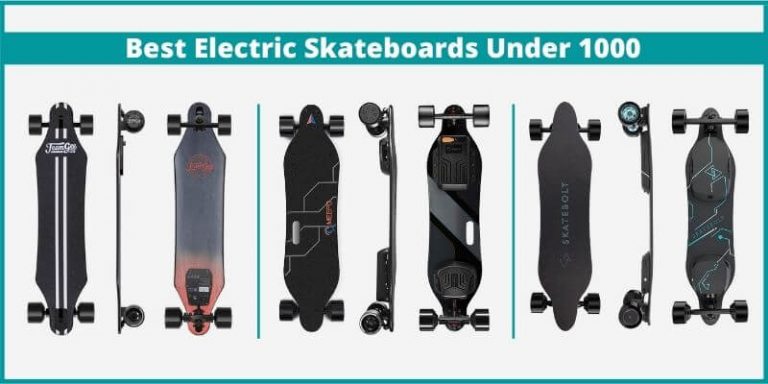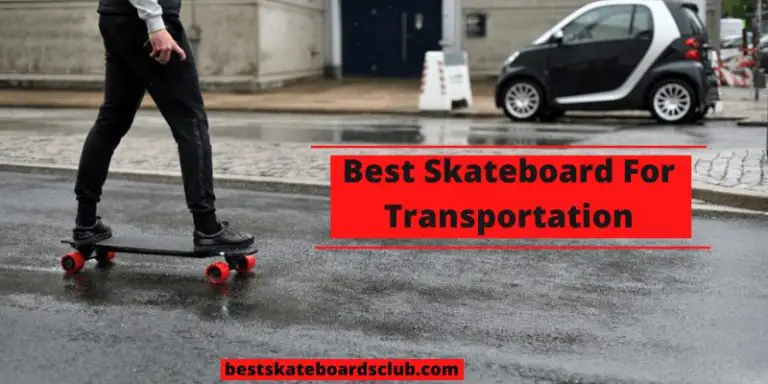Unveiling the Truth: Do Electric Skateboards Have Brakes?
Strap on your helmet, brace yourself for an electrifying ride, and prepare to unravel the truth: Do electric skateboards have brakes?
Yes, electric skateboards indeed have brakes. These cutting-edge personal transportation devices have evolved far beyond their traditional counterparts, incorporating advanced braking systems to ensure rider safety.
With various braking mechanisms such as regenerative, mechanical, and electronic, electric skateboards offer a range of options for controlling speed and stopping efficiently.
Imagine gliding down the urban streets, effortlessly maneuvering through traffic, and feeling the wind rushing through your hair. But what if a sudden obstacle appears in your path?
How do these sleek, motorized boards bring you to a halt without compromising your safety?
In this comprehensive article, we delve deep into the world of electric skateboards and their braking capabilities. We’ll explore the different types of braking systems, factors affecting braking performance, and safety considerations, and even compare electric skateboards to other modes of transportation.
Get ready to discover the secrets behind the brakes that ensure a thrilling yet secure ride on these modern marvels!
Understanding Electric Skateboards
Electric skateboards have revolutionized the world of skateboarding, combining the exhilaration of traditional skateboarding with the convenience and power of electric propulsion. These high-tech devices are designed to provide an electrifying and eco-friendly mode of transportation.
Electric skateboards are battery-powered skateboards that incorporate an electric motor and a control system to propel the rider forward. They typically consist of the following key components:
- Deck: The deck is the main platform of the skateboard, usually made of wood or composite materials, providing a sturdy and stable base for the rider.
- Electric Motor: Electric skateboards have an electric motor that generates the necessary power to propel the rider forward. The motor is often located near the rear wheels.
- Battery Pack: The battery pack supplies the electric skateboard with the energy needed to operate the motor. It is usually located on the underside of the deck and can be removable or integrated.
- Control System: Electric skateboards feature a control system that allows the rider to regulate the speed and acceleration. This can be achieved through a handheld remote control or built-in controls on the skateboard itself.
How are Electric Skateboards Different From Regular Skateboards?
While electric skateboards share some similarities with traditional skateboards, they also have several notable differences:
- Propulsion: The most obvious difference is the method of propulsion. Traditional skateboards rely solely on the physical push and motion of the rider’s feet, while electric skateboards utilize an electric motor to provide an additional power source.
- Speed and Range: Electric skateboards can reach higher speeds and cover greater distances than traditional skateboards. The electric motor accelerates the rider, allowing for faster travel and extended range.
- Control and Braking: Electric skateboards offer more control options, typically including a handheld remote control or built-in controls on the skateboard. This enables riders to adjust their speed and apply brakes when necessary, providing enhanced maneuverability and safety.
- Weight and Size: Electric skateboards tend to be slightly heavier and bulkier due to the inclusion of batteries and an electric motor. However, technological advancements have led to more lightweight and compact designs in recent years.
Electric skateboards represent a thrilling fusion of traditional skateboarding and modern technology. Their electric power, advanced control systems, and unique components distinguish them from their non-motorized counterparts, creating an exciting and efficient mode of transportation for riders of all skill levels.
Types of Braking Systems in Electric Skateboards
Now that you have some basic understanding of whether electric skateboards have brakes let’s take this a step further and understand the different braking systems used in electric skateboards.
Regenerative Braking
Regenerative braking is a mechanism commonly used in electric vehicles, including electric skateboards. It harnesses the electric motor’s ability to reverse its function and operate as a generator.
Instead of relying solely on traditional friction-based braking, regenerative braking converts kinetic energy into electrical energy, which is stored in the skateboard’s battery.
When the rider applies the brakes on an electric skateboard equipped with regenerative braking, the electric motor switches to generator mode. As the wheels slow down, the rotation of the wheels turns the motor, causing it to generate electricity.
This electrical energy is then returned to the battery, effectively recharging it. The conversion of kinetic energy into electrical energy helps slow down the skateboard while extending the overall battery life.
Advantages and Limitations of Regenerative Braking
- Extended range: By recovering energy during braking, regenerative braking helps increase the overall distance that can be covered on a single charge.
- Increased efficiency: Regenerative braking reduces reliance on traditional mechanical braking systems, leading to less wear and tear on brake components.
- Eco-friendliness: By reducing the need for frequent battery charging, regenerative braking contributes to a more sustainable and environmentally friendly mode of transportation.
- Limited effectiveness at high speeds: Regenerative braking is most efficient at lower speeds, and its effectiveness decreases as the skateboard travels faster.
- Incomplete energy recovery: Not all kinetic energy can be converted into electrical energy, so regenerative braking is not 100% efficient.
- Reduced braking power: Regenerative braking alone may not provide sufficient stopping power in emergencies, necessitating additional braking mechanisms.
Mechanical Braking
Mechanical braking systems in electric skateboards involve physical contact between braking components to generate friction and slow down or stop the skateboard. The two main mechanical brakes used are disc and drum brakes.
Disc brakes consist of a rotor connected to the wheel and a caliper that houses brake pads. When the rider applies the brakes, hydraulic or cable pressure squeezes the brake pads against the rotor, generating friction and slowing down the skateboard.
On the other hand, drum brakes feature brake shoes housed inside a drum attached to the wheel. When the brakes are engaged, the brake shoes press against the drum, creating friction and decelerating the skateboard.
Pros and Cons of Mechanical Braking Systems
- Reliable stopping power: Mechanical brakes can provide strong and consistent braking performance, allowing riders to control their speed effectively.
- Effective at high speeds: Mechanical brakes can handle higher speeds than regenerative braking, making them suitable for emergency stops.
- Ease of maintenance: Mechanical brakes are generally easier to maintain and repair, as they involve simpler mechanisms and fewer electronic components.
- Wear and tear: Mechanical brakes experience gradual wear on the brake pads or shoes, requiring periodic replacement.
- Limited energy recovery: Unlike regenerative braking, mechanical braking does not recover energy but dissipates it as heat, resulting in energy loss.
- Heavier weight: Mechanical braking systems add weight to the skateboard due to the presence of additional components, such as calipers or drums.
Electronic Braking
Electronic braking systems in electric skateboards rely on electronic components to control the braking process.
Instead of directly applying physical force, electronic braking uses sensors and algorithms to adjust motor power and slow down the skateboard.
Electronic braking systems monitor various factors, such as speed, rider input, and weight distribution, to determine the appropriate braking force required.
By adjusting the electric motor’s power output, electronic braking reduces the speed of the skateboard. This braking method is often implemented through the skateboard’s electronic control system.
Pros and Cons of Electronic Braking
- Precise control: Electronic braking allows for fine-tuned control of the braking force, enhancing rider safety and comfort.
- Reduced wear: Electronic braking systems can extend the lifespan of mechanical braking components by minimizing their usage.
- Integration with other features: Electronic braking can seamlessly integrate with other electronic functionalities, such as regenerative or stability control.
- Reliance on electronics: Electronic braking systems depend on sensors and control algorithms, making them potentially vulnerable to malfunctions or software issues.
- Power consumption: Electronic braking systems consume electrical energy from the battery, which may reduce the overall range of the skateboard.
- Complex maintenance: Repairing or adjusting electronic braking systems often requires specialized knowledge and tools, making maintenance more complex than mechanical systems.
Combination Braking Systems
Combination braking systems in electric skateboards utilize a combination of different braking mechanisms, such as regenerative braking, mechanical braking, and electronic braking. These systems aim to maximize braking efficiency, safety, and rider control by integrating multiple methods.
Various electric skateboard manufacturers offer models with combination braking systems. For instance, some skateboards may feature regenerative braking for energy recovery, mechanical brakes for reliable stopping power, and electronic braking for precise control.
The effectiveness and performance of combined braking systems depend on the specific implementation and integration of the different braking mechanisms. A well-designed combination braking system can offer the advantages of each braking method while compensating for its limitations.
This approach provides a comprehensive and versatile braking solution that enhances overall safety and rider experience. However, such systems’ complexity and cost may be higher than individual braking methods.
Regular maintenance and calibration are essential to ensure the optimal functioning of combination braking systems.
IV. Factors Influencing Braking Performance
There are some factors that plays a vital role in the performance of various kinds of braking systems. Let’s look at all these factors and understand how they impact an electric skateboard breaking.
Speed and Momentum
Speed and momentum play a crucial role in the braking performance of electric skateboards. The relationship between these factors and braking distance is significant.
When traveling at higher speeds, electric skateboards require more time and distance to come to a complete stop. Increased momentum intensifies the force acting on the braking system, impacting its effectiveness.
Different braking systems handle varying speeds differently. Regenerative braking may be more efficient at lower speeds, where the energy generated during braking can be effectively captured.
Mechanical braking systems, such as disc or drum brakes, tend to perform consistently across a wider range of speeds, offering reliable stopping power regardless of the velocity.
Terrain and Surface Conditions
The terrain and surface conditions greatly influence the braking system’s effectiveness on an electric skateboard.
Uneven or slippery surfaces, such as gravel, wet pavement, or icy paths, can reduce traction and compromise the ability of the braking system to grip the ground effectively.
This can result in longer braking distances and a potential loss of control.
Different types of surfaces require specific considerations for optimal braking. Smooth, dry asphalt provides the best conditions for most braking systems, offering excellent traction and stopping power.
However, when encountering rough surfaces, off-road trails, or unpredictable terrains, riders should exercise caution and adapt their braking technique accordingly.
Weight and Load Capacity
The weight and load capacity of the rider influences the braking performance of an electric skateboard. A heavier rider and additional cargo or equipment increase the overall mass that the braking system needs to decelerate. This can impact braking distance and the effectiveness of the system.
Manufacturers often specify recommended weight limits for their electric skateboards to ensure optimal braking performance. Exceeding these limits may compromise the efficiency of the braking system and potentially lead to unsafe riding conditions.
Riders must adhere to these weight limits and select electric skateboards that can accommodate their body weight and any additional load without sacrificing braking effectiveness.
By considering the interplay between speed, momentum, terrain conditions, surface types, weight, and load capacity, riders can better understand the factors that influence the braking performance of electric skateboards.
Adapting one’s riding style and being mindful of these factors contributes to safer and more controlled braking experiences.
A. Speed and Momentum 1. Relationship between speed, momentum, and braking distance 2. How different braking systems handle varying speeds
B. Terrain and Surface Conditions 1. Impact of terrain and surface conditions on braking effectiveness 2. Considerations for different types of surfaces
C. Weight and Load Capacity 1. Influence of rider weight and load capacity on braking performance 2. Recommended weight limits for optimal braking
V. Safety Considerations and Best Practices
A. Braking Techniques 1. Proper ways to engage different braking systems 2. Tips for maintaining control during braking
B. Protective Gear 1. Importance of wearing appropriate protective gear 2. Recommended safety equipment for electric skateboarding
C. Maintenance and Inspections 1. Regular maintenance to ensure braking system functionality 2. Key components to check for maintenance and inspections
VI. Comparing Electric Skateboards to Other Modes of Transportation
A. Electric Skateboards vs. Traditional Skateboards 1. Brake availability and effectiveness in electric vs. traditional skateboards 2. Advantages and disadvantages of electric skateboards for braking
B. Electric Skateboards vs. Electric Scooters/Bikes 1. Comparison of braking systems in electric skateboards and scooters/bikes 2. Different use cases and implications for braking safety
VII. Conclusion
- Summary of the key points discussed in the article
- Importance of choosing an electric skateboard with reliable braking system
VIII. FAQs (Frequently Asked Questions)
- Are electric skateboards equipped with brakes by default?
- Can you modify an electric skateboard to add brakes if it doesn’t have them?
- What is the typical stopping distance for an electric skateboard?
- How long does it take to learn proper braking techniques?
- Are electric skateboard brakes effective in emergency situations?
- What should I do if my electric skateboard’s brakes fail?
- How do different braking systems impact battery life?
- Are there any legal regulations regarding electric skateboard brakes?






